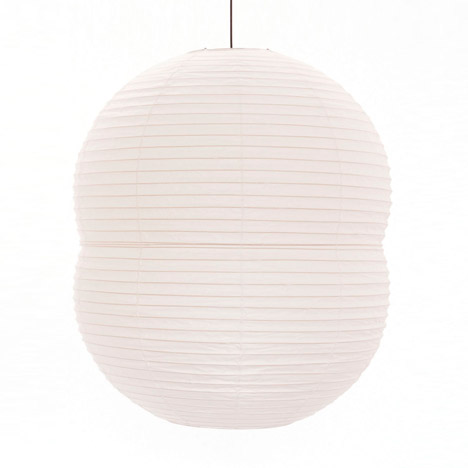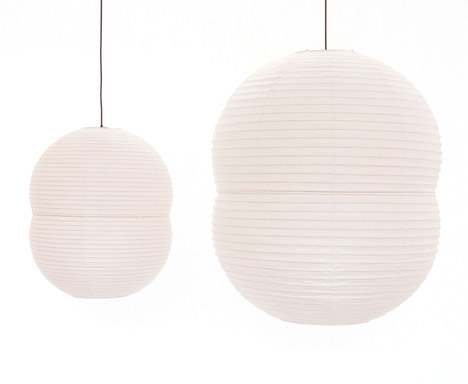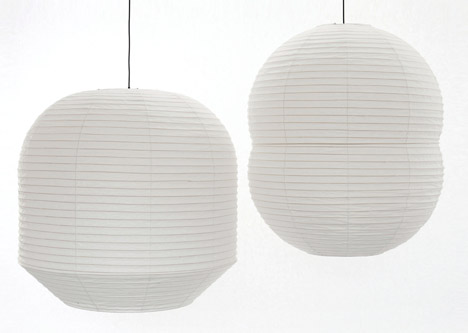Barber and Osgerby turns to traditional Japanese craft for Hotaru lighting collection
London Design Festival 2015: design duo Edward Barber and Jay Osgerby worked with age-old methods of production in Japan to create a range of paper lanterns.
The collection named Hotaru – meaning firefly – features lanterns with washi paper shades made from mulberry bark, housed on frames constructed from bamboo wire.

The Double Bubble lamp is made from twin spheres joined together, while the Buoy light mimics the shape of a floating marine device. Each of the designs is available in two sizes, and have been created to be displayed singularly or in groups.
The lamps have been launched in partnership with London design store twentytwentyone, and were crafted by the family-run Ozeki & Co Ltd – a Japanese company that has been using traditional methods to make paper lanterns sine 1891.

Barber told Dezeen he arranged a meeting with the company while on holiday in Japan and travelling through the city of Gifu. "It's a handful of guys who work on really simple wooden frames with this bamboo wire, and a paintbrush and glue," he said. "These are the most beautifully handmade lanterns, I think, in the world."
In 1953 Ozeki & Co worked with designer Isamu Noguchi to produce the iconic Akari light sculptures, and although the company has partnered with several Japanese artists, it rarely collaborates with other designers. After some discussion, they agreed to work with the duo on a range of lighting.

"It takes time, and we're just starting with these two designs – two shapes, and in two sizes," Barber told Dezeen. "The ambition is to develop a range of different styles with patterns and all kinds of things."
The lights were revealed at twentytwentyone as part of London Design Festival 2015, which ran from 19 to 27 September.

The duo, who were the recipients of this year's London Design Medal created two huge mirrored structures at the V&A's Raphael Gallery for last year's festival.
The duo recently spoke to Dezeen about the future of London, claiming that rent rises, education funding cuts and a government that didn't value creativity could all contribute to the demise of its status as a leading creative city.